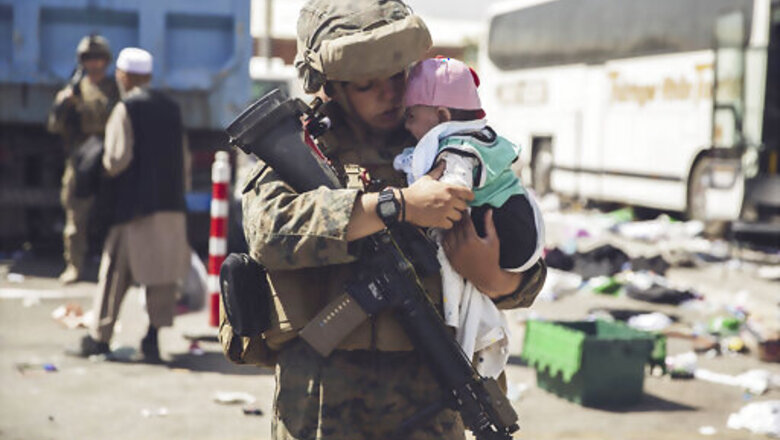
views
U.S. military planes have carried the last U.S. service members and diplomats from Kabuls airport, ending Americas longest war. Ordinary Americans closely watched the chaotic withdrawal from Afghanistan, as they did the start of the war nearly 20 years ago, in the weeks after the 9/11 attacks. But Americans often tended to forget about the Afghanistan war in between, and it received measurably less oversight from Congress than the Vietnam War did. But its death toll for Afghans and Americans and their NATO allies is in the many tens of thousands. And because the U.S. borrowed most of the money to pay for it, generations of Americans to come will be paying off its cost, in the trillions of dollars.
A look at the U.S.-led war in Afghanistan, by the numbers, as the last Americans deployed there departed.
Much of the data below is from Linda Bilmes of Harvard Universitys Kennedy School and from the Brown University Costs of War project. Because the United States between 2003 and 2011 fought the Afghanistan and Iraq wars simultaneously, and many American troops served tours in both wars, some figures as noted cover both post-9/11 U.S. wars.
THE LONGEST WAR:
Percentage of U.S. population born since the 2001 attacks plotted by al-Qaida leaders who were sheltering in Afghanistan: Roughly one out of every four.
THE HUMAN COST:
American service members killed in Afghanistan: 2,461.
U.S. contractors, through April: 3,846.
Afghan national military and police, through April: 66,000.
Other allied service members, including from other NATO member states, through April: 1,144.
Afghan civilians, through April: 47,245.
Taliban and other opposition fighters, through April: 51,191.
Aid workers, through April: 444.
Journalists, through April: 72.
AFGHANISTAN AFTER NEARLY 20 YEARS OF U.S. OCCUPATION:
Percentage drop in infant mortality rate since U.S., Afghan and other allied forces overthrew the Taliban government, which had sought to restrict women and girls to the home: About 50.
Percentage of Afghan teenage girls able to read today: 37.
Percentage of Afghans with access to electricity in 2005: 22
In 2019: 98.
Days before the U.S. withdrawal that the Taliban retook control: 15.
OVERSIGHT BY CONGRESS:
Date Congress authorized U.S. forces to go after culprits in Sept. 11, 2001, attacks: Sept. 18, 2001.
Number of times U.S. lawmakers have voted to declare war in Afghanistan: 0.
Number of times lawmakers on Senate Appropriations defense subcommittee addressed costs of Vietnam War, during that conflict: 42
Number of times lawmakers in same subcommittee have mentioned costs of Afghanistan and Iraq wars, through mid-summer 2021: 5.
Number of times lawmakers on Senate Finance Committee have mentioned costs of Afghanistan and Iraq wars since Sept. 11, 2001, through mid-summer 2021: 1.
PAYING FOR A WAR ON CREDIT, NOT IN CASH:
Amount President Harry Truman temporarily raised top tax rates to pay for Korean War: 92%.
Amount President Lyndon Johnson temporarily raised top tax rates to pay for Vietnam War: 77%.
Amount President George W. Bush cut tax rates for the wealthiest, rather than raise them, at outset of Afghanistan and Iraq wars: At least 8%.
Estimated amount of direct Afghanistan and Iraq war costs that the United States has debt-financed as of 2020: $2 trillion.
Estimated interest costs by 2050: Up to $6.5 trillion.
THE WARS END. THE COSTS DONT:
Amount Bilmes estimates the United States will pay in health care, disability, burial and other costs for roughly 4 million Afghanistan and Iraq veterans: more than $2 trillion.
Period those costs will peak: after 2048.
Disclaimer: This post has been auto-published from an agency feed without any modifications to the text and has not been reviewed by an editor
Read all the Latest News, Breaking News and Assembly Elections Live Updates here.
















Comments
0 comment